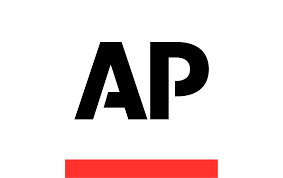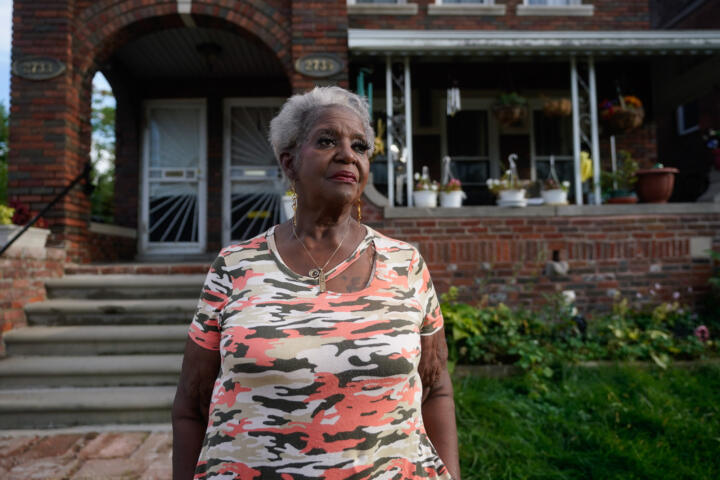A couple of years into the pandemic, Shirley Neville had finally had enough of her crappy internet service.
“It was just a headache,” said Neville, who lives in a middle-class neighborhood in New Orleans whose residents are almost all Black or Latino. “When I was getting ready to use my tablet for a meeting, it was cutting off and not coming on.”
Neville said she was willing to pay more to be able to Zoom without interruption, so she called AT&T to upgrade her connection. She said she was told there was nothing the company could do.
In her area, AT&T only offers download speeds of 1 megabit per second or less, trapping her in a digital Stone Age. Her internet is so slow that it doesn’t meet Zoom’s recommended minimum for group video calls, doesn’t come close to the FCC’s definition of broadband, currently 25 Mbps, and is worlds below median home internet speeds in the U.S., which average 167 Mbps.
“In my neighborhood, it’s terrible,” Neville said.
But that’s not the case in other parts of New Orleans. AT&T offers residents of the mostly White, upper-income neighborhood of Lakeview internet speeds almost 400 times faster than Neville’s—for the same price: $55 a month.
The vast gulf between the quality of service AT&T offered these neighborhoods for the same cost is not a fluke.
The Markup gathered and analyzed more than 800,000 internet service offers from AT&T, Verizon, Earthlink, and CenturyLink in 38 cities across America and found that all four routinely offered fast base speeds at or above 200 Mbps in some neighborhoods for the same price as connections below 25 Mbps in others.
The neighborhoods offered the worst deals had lower median incomes in nine out of 10 cities in the analysis. In two-thirds of the cities where The Markup had enough data to compare, the providers gave the worst offers to the least-White neighborhoods.
These providers also disproportionately gave the worst offers to formerly redlined areas in every one of the 22 cities examined where digitized historical maps were available. These are areas a since-disbanded agency created by the federal government in the 1930s had deemed “hazardous” for financial institutions to invest in, often because the residents were Black or poor. Redlining was outlawed in 1968.
By failing to price according to service speed, these companies are demanding some customers pay dramatically higher unit prices for advertised download speed than others. CenturyLink, which showed the most extreme disparities, offered some customers service of 200 Mbps, amounting to as little as $0.25 per Mbps, but offered others living in the same city only 0.5 Mbps for 400 times as much—$100 per Mbps.
Residents of neighborhoods offered the worst deals aren’t just being ripped off; they’re denied the ability to participate in remote learning, well-paying remote jobs, and even family connection and recreation—ubiquitous elements of modern life.
“It isn’t just about the provision of a better service. It’s about access to the tools people need to fully participate in our democratic system,” said Chad Marlow, senior policy counsel at the ACLU. “That is a far bigger deal and that’s what really worries me about what you’re finding.”
Christopher Lewis, president and CEO of the nonprofit Public Knowledge, which works to expand internet access, said The Markup’s analysis shows how far behind the federal government is when it comes to holding internet providers to account. “Nowhere have we seen either the FCC nor the Congress, who ultimately has authority as well, study competition in the marketplace and pricing to see if consumers are being price gouged or if those service offerings make sense.”
None of the providers denied charging the same fee for vastly different internet speeds to different neighborhoods in the same cities. But they said their intentions were not to discriminate against communities of color and that there were other factors to consider.
The industry group USTelecom, speaking on behalf of Verizon, said the cost of maintaining the antiquated equipment used for slow speed service plays a role in its price.
“Fiber can be hundreds of times faster than legacy broadband—but that doesn’t mean that legacy networks cost hundreds of times less,” USTelecom senior vice president Marie Johnson said in an email. “Operating and maintaining legacy technologies can be more expensive, especially as legacy network components are discontinued by equipment manufacturers.”
AT&T spokesperson Jim Greer said in an emailed statement that The Markup’s analysis is “fundamentally flawed” because it “clearly ignored our participation in the federal Affordable Connectivity Program and our low-cost Access by AT&T service offerings.” The Affordable Connectivity Program was launched in 2021 and pays up to $30 a month for internet for low-income residents, or $75 on tribal lands.
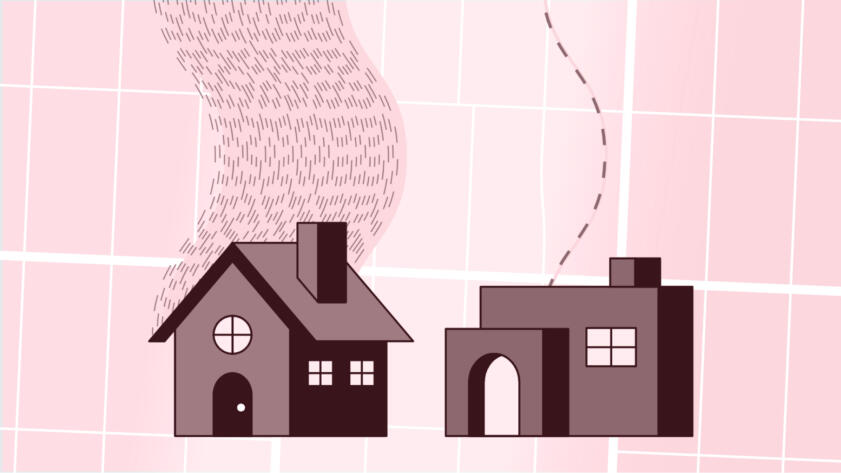
Show Your WorkStill Loading
How We Uncovered Disparities in Internet Deals
AT&T, Verizon, EarthLink, and CenturyLink disproportionately offered the worst deals to lower-income areas and communities of color across the country—while charging the same for faster speeds in higher-income and Whiter areas
“Any suggestion that we discriminate in providing internet access is blatantly wrong,” he said, adding that AT&T plans on spending $48 billion on service upgrades over the next two years.
Recent research looking at 30 major cities found only about a third of eligible households had signed up for the federal subsidy, however, and the majority use it to help cover cellphone bills, which also qualify, rather than home internet costs. Connectivity advocates told The Markup that it’s hard to get people to jump through the bureaucratic hoops needed to sign up for the program when service is slow.
Greer declined to say how many or what percentage of AT&T’s internet customers are signed up for either the ACP or the company’s own low-cost program for low-income residents.
In a letter to the FCC, AT&T insisted its high-speed internet deployments are driven by “household density, not median incomes.” But when The Markup ran a statistical test controlling for density, it still found AT&T disproportionately offered slower speeds to lower-income areas in three out of four of the 20 cities where we investigated their service.
“We do not engage in discriminatory practices like redlining and find the accusation offensive,” Mark Molzen, a spokesperson for CenturyLink’s parent company, Lumen, wrote in an email. He said that The Markup’s analysis is “deeply flawed” without specifying how. He did not respond to requests for clarification.
EarthLink, which doesn’t own internet infrastructure in the examined cities but rather rents capacity from other providers, did not provide an official comment despite repeated requests.
Internet prices are not regulated by the federal government because unlike telephone service, internet service is not considered a utility. As a result, providers can make their own decisions about where they provide service and how much to charge. The FCC declined a request to comment on the findings.
The investigation is based on service offers collected from the companies’ own websites, which contain service lookup tools that list all available plans for specific addresses, using a method pioneered by researchers at Princeton. The Markup analyzed price and speed for nearly 850,000 offers for addresses in the largest city in 38 states where these providers operate.
Las Vegas is one city where large swaths of CenturyLink’s offers were for slow service. Almost half didn’t meet the current federal definition of broadband. These fell disproportionately on Las Vegas’s lower-income and least-White areas.
Las Vegas councilwoman Olivia Diaz said that in the summer of 2020, she approached families where children had stopped showing up to virtual lessons the previous school year to find out what went wrong.
City schools were preparing to begin their second school year marked by COVID-19 lockdowns.
“We kept hearing there were multiple children trying to connect in the household, but they weren’t able to,” said Diaz, who represents a district that’s predominantly Latino and on the lower end of the city’s income spectrum.
More than 80 percent of CenturyLink’s internet offers in her district were for service slower than 25 Mbps. Education advocacy group Common Sense Media recommends at least 200 Mbps download speeds for a household to reliably conduct multiple, simultaneous video conferencing sessions.
“I think it’s unfair knowing that it is slow service that we’re paying for that is not commensurate with the faster speeds that they have in the other parts of the city that are paying the same price,” Diaz said. “It just breaks my heart to know we’re not getting the best bang for our buck.”
Diaz said city officials have asked CenturyLink to expand high-speed service in her district, but the company declined, citing the prohibitive cost of deploying new infrastructure in the area. CenturyLink did not respond to emails asking about this request.
Some officials told The Markup they’ve been yelling for years about bad service for high prices.
“If I was paying $6 a month,” Joshua Edmonds, Detroit’s director of digital inclusion, “well you get what you’re paying for.” But he objects to people being asked to pay premium rates for bad service. “What I pay versus what I get doesn’t really make sense.”
In a 2018 report, Bill Callahan, who runs the online accessibility organization Connect Your Community, coined the term “tier flattening” to describe charging internet customers the same rate for differing levels of service. He said The Markup’s findings show how much of America’s internet market is based on the “basic unfairness” of internet service providers deciding to deprioritize investing in new, high-speed infrastructure in marginalized areas.
“They’ve made a decision that those neighborhoods are going to be treated differently,” said Callahan. “The core reason for that is they think they don’t have enough money in those neighborhoods to sustain the kind of market they want.”
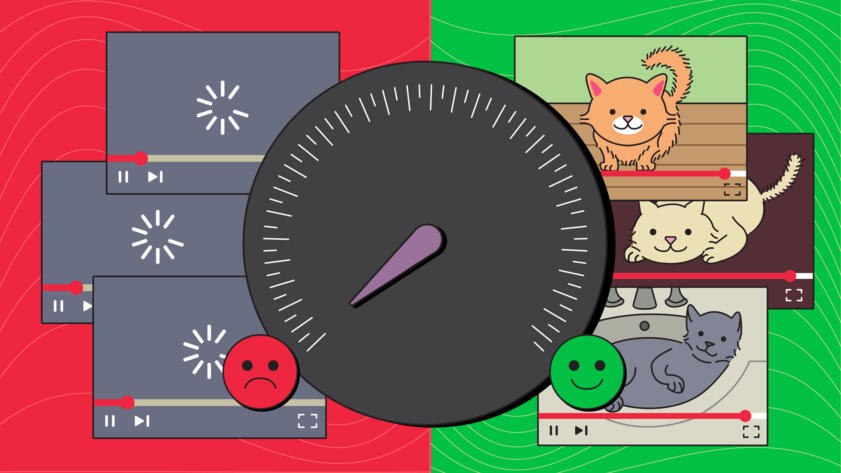
The BreakdownStill Loading
Why Is My Internet So Slow?
Small tubes good, big tubes better
The FCC is currently drafting rules under a provision of the 2021 infrastructure bill aimed at “preventing digital discrimination of access based on income level, race, ethnicity, color, religion, or national origin.”
A coalition of 39 groups led by the Electronic Frontier Foundation and Center for Accessible Technology urged the FCC to take aggressive action rectifying broadband inequality by examining the socioeconomics of the neighborhoods getting the slowest speeds and the prices they pay—regardless of whether the companies intended to discriminate.
AT&T insisted in filings with the agency that the standard for discrimination should be explicit, deliberate efforts to avoid building infrastructure in areas that are populated by people of color or lower-income residents.
It also asked for subsidies to build high-speed internet in lower-income neighborhoods because, as AT&T asserted in its letter to the FCC, “most or all deficiencies in broadband access appear to result not from invidious discrimination, but from ordinary business-case challenges in the absence of subsidy programs.”
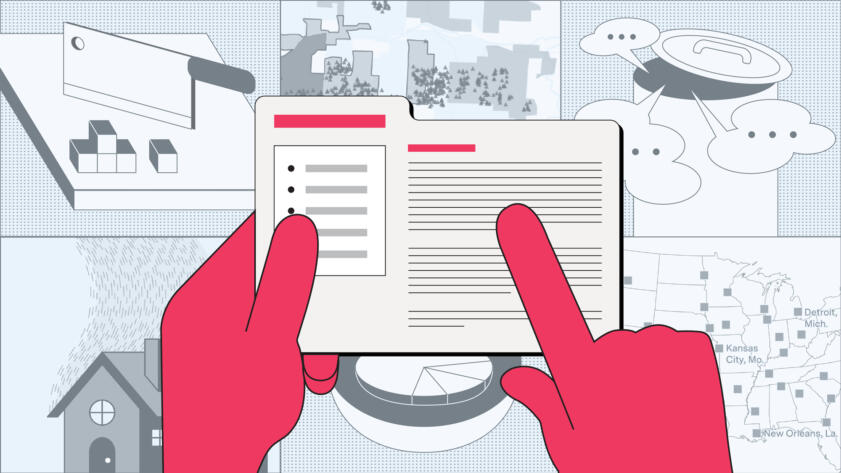
Story Recipes
Journalists: Investigate Which Neighborhoods in Your City Are Offered the Worst Internet Deals
We analyzed more than 800,000 internet service offers in major U.S. cities. Here’s how you can use our data to report local stories
Advocates say that’s just not true. “There are very few places in the country where it is not economically feasible to deploy broadband,” said Brian Thorn, who served as a senior researcher for the Communication Workers of America, a union representing telecom employees, which has been vocal on the issue and filed its own comment to the FCC. (Full disclosure: The CWA is the parent union of The NewsGuild-CWA, which represents The Markup’s employees.) He said members are tired of seeing their employers make inequitable infrastructure deployment decisions.
“We would hear from members all the time that they’re out laying lines on one side of the neighborhood and not on the other,” he said.
In a letter to the FCC, the coalition asserted that “broadband users are experiencing discriminatory impacts of deployment that are no different than the impacts of past redlining policies in housing, banking, and other venues of economic activity.”
The term “redlining” derives from efforts by the federal government to stem the tide of foreclosures during the Great Depression by drawing up maps, with the help of real estate agents, to identify areas that were safe for mortgage lending. Predominantly White neighborhoods were consistently rated better than less-White neighborhoods, which were shaded in red. Echoes of these maps still reverberate today in things like rates of home ownership and prenatal mortality.
Notes on the historical map explaining why one part of Kansas City, Mo., was redlined cited “Negro encroachment from the north.” In that same area, AT&T offered only slow service to every single address The Markup examined.
Across Kansas City, AT&T offered the worst deals to 68 percent of addresses in redlined areas, compared to just 12 percent of addresses in areas that had been rated “best” or “desirable.”
Historically redlined areas disproportionately received slow internet speeds in Kansas City, Mo.
Residential addresses offered different download speeds for the same price
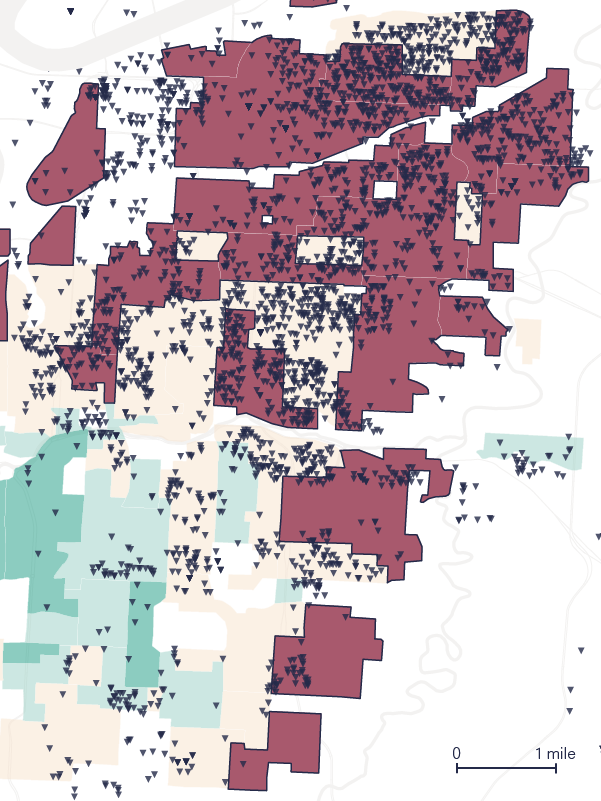
68% of addresses in redlined areas were offered slow speeds
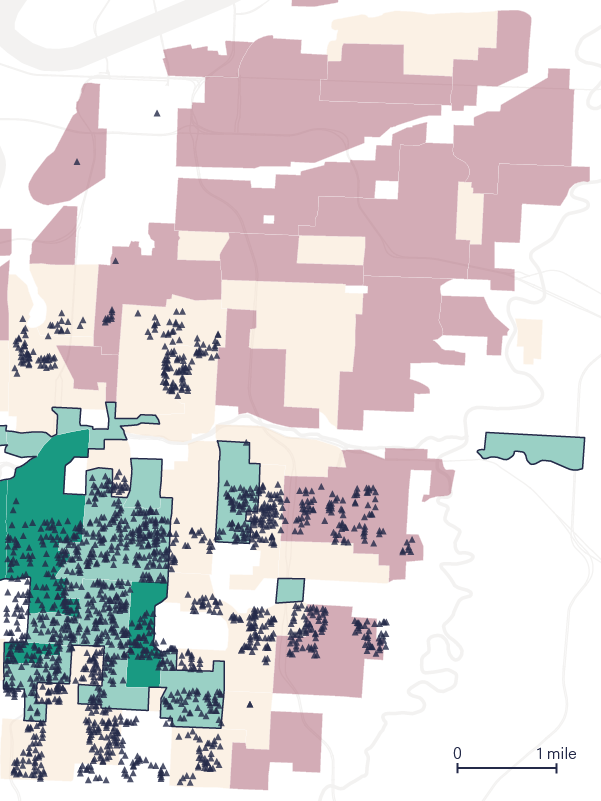
The fastest speeds were offered in historically high-rated areas

Redlining maps frequently tracked neatly with the disparities The Markup found.
Addresses in redlined areas of 15 cities from Portland to Atlanta were offered the worst deals at least twice as often as areas rated “best” or “desirable.” Minneapolis, which is served by CenturyLink, displayed one of the most striking disparities: Formerly redlined addresses were offered the worst deals almost eight times as often as formerly better-rated areas.
Pamela Jackson-Walters, a 68-year-old longtime resident of Detroit’s Hope Village, said she needs the internet to work on her dissertation in organizational leadership at University of Phoenix online and to virtually attend church services. The slow speeds AT&T offered were a constant annoyance.
“They still haven’t installed the high-speed internet over here,” she said. “How do we get it? Are we too poor of a neighborhood to have the better service?”
Hope Village has a per capita income of just over $11,000 and is almost entirely Black.
To add insult to injury, last fall, AT&T internet service across Hope Village went down for 45 days before being restored. This summer, Jackson-Walters’s internet went down again, this time for four weeks, she said.
Jeff Jones, another longtime Hope Village resident, noted a bitter irony amid all the service problems. “To add to the insult, I can look out my bedroom window literally, maybe 150 yards, is the AT&T service facility,” he said with a weary laugh. “I’m like, please help me! You’re right there! How can you ignore this problem that is just right in front of your face?”
Until The Markup told Hope Village residents its findings about AT&T’s pricing practices in Detroit, they didn’t know that lower-income areas were more often asked to pay the same price for slower internet.
“That’s the big piece,” said Angela Siefer, the executive director of the National Digital Inclusion Alliance, which advocates for broadband access. “Folks don’t know that they’re being screwed.”





